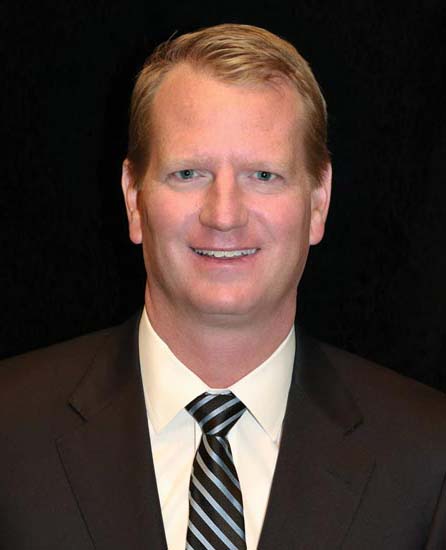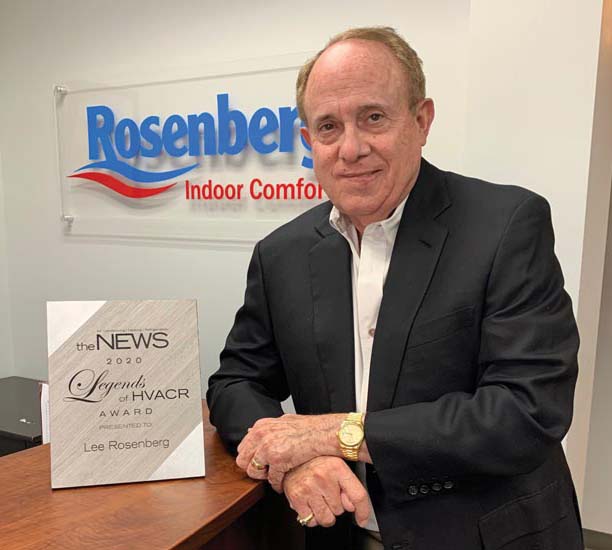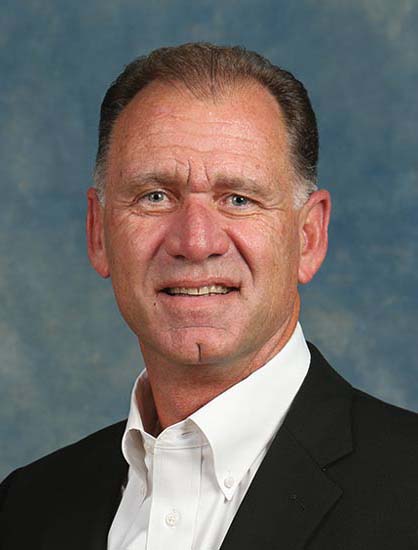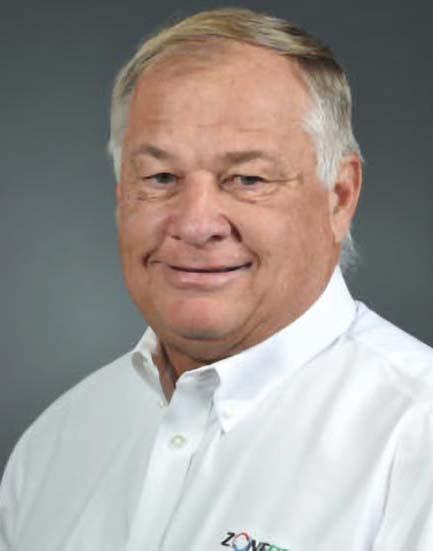Twelve months ago, nobody would have predicted what 2020 had in store for the HVAC world. Lockdowns, government loans, and a skyrocketing IAQ industry were not on anyone’s radar.
What is in store for 2021? A few brave HVAC industry leaders have agreed to go out on a limb and make 2021 predictions for The ACHR NEWS.

One of the most popular tools used to forecast the probability of future growth for non-residential construction is the Architecture Billings Index (ABI). Currently, billings are down, which indicates a slowdown in new work.
However, the street and its associated players — like developers, general contractors, engineers, and realtors — still maintain some optimism. In my 45 years in the industry, I have never been through an experience like 2020, where there is plenty of doom and gloom around every corner. But I still believe in an eventual upturn in the economy somewhere in the middle of the second quarter of 2021. Why? I believe there is a lot of pent-up demand sitting out there that is still waiting for the vaccine or other signs of recovery. These are apparent in distribution, manufacturing returning to the U.S., technology dependency, and the infrastructure needed to support this sector.
In addition, the need for more healthcare continues to increase, along with public sector works supported by municipal bonds. Customers have postponed retrofit projects to maintain cash reserves just in case the instability continues. Many industries have the money budgeted for expansion, but there is still a wait-and-see attitude. There are many organizations planning for a new way of doing business, which will require alterations in their current business models. A great deal of these future changes will necessitate HVAC changes and improvements to their facilities.
So bottom line, I am optimistic about the near future. I believe we are in a short-term stall before a strong rebound in the second half of 2021.

President, Helm Group Inc.
In 2021, I think contractors will use what we learned from working remotely during the COVID-19 pandemic to simplify many aspects of project management. We will see the evolution of data management tools from the current desktop-centered format to a mobile-centric approach. This will make it easier than ever for our project managers to stay connected.
Software providers — and even contractors’ in-house staffs — will develop mobile apps that pull together the most critical information, making mobile the best and first resort rather than the last. I also think that we will soon be able to see supply chain management, productivity management, and workflow status information on a real-time basis, with competing tools for access to this information. The easiest and greatest short-term benefit will likely come from the major HVAC equipment manufacturers in the form of real-time production and delivery updates.
Next will be third-party applications that aggregate this data from multiple manufacturers for specific projects. Productivity and workflow will hopefully go beyond the fab shop to the field, where daily production can be tracked without the need to physically count work-in-place or mark up a CAD file. There are many software providers that have the ability to provide this service, and I think at least three of them will have an off-the-shelf solution available within the next 12 months.

Just before Thanksgiving, I visited a high-end department store to pick up a couple pair of slacks that I had purchased and had altered. We (my wife was with me) stopped at the jewelry department. We asked the salesperson how business had been. She admitted that it had been quite slow. We discussed the fact that there were certainly customers with sufficient discretionary income but that they just were not in the “buying mood.”
The COVID-19 pandemic has presented many challenges to our HVACR contracting community. However, we are blessed that we are included as an “essential” business. Temperature extremes yield sales opportunities.
I have a bullish outlook for 2021. Headwinds can come from certain business customers who are currently shuttered or working remotely and from those experiencing severe financial restraints. On the other hand, more individuals are working from home and are finally realizing that their indoor comfort systems are inadequate. As a contractor, we have found that it has been much easier to schedule our residential service calls.
Like many contractors, we have experienced a few equipment and material shortages, but we have exceptional relationships with multiple vendors. Having a solid financial position with substantial working capital is important.
In my estimation, 2021 stands to be a very good year. An outstanding year? That remains to be seen. Having effective vaccines along with robust distribution systems will make all the difference in a world starving to return to a reasonable level of normalcy.
In the meantime, we are finalizing our 2021 budget, interviewing, hiring, and on-boarding additional field personnel, and reviewing and updating all of our operational processes while exploring ways to increase productivity in all areas.

As we wind down one of the most turbulent years in history, we start looking forward to 2021 and how we prepare our business and workforce. Unfortunately, the coronavirus will still be a driving factor to manage until widespread vaccines are available and deployed.
While our industry has excelled as an essential business in 2020 — from the cold chain to HVAC systems to keep our homes, hospitals, and other critical infrastructure operational — COVID-19 will continue to impact our industry and economy throughout 2021.
Residential air conditioning demand has remained high due to the massive shift to working from home and homeowners investing in their homes. Remote working will continue into 2021 and indoor comfort will remain important, so I anticipate that this will shore-up short-term demand. However, we are entering a phase where the replacement volume of installed base (systems installed 15 years ago) will trend down. Gains in new construction will not offset this downward trend.
Commercial HVAC will likely remain subdued as the real estate market adjusts to the impact of COVID-19, including the significant impacts on office space, hotels, restaurants, and retail (to name a few). IAQ will get increasing attention, whether that means fresh air intake, enhanced filtration, humidity control, or UV lights. Our industry should lead in this important (and previously underappreciated) area. It will become more important in the residential market, too.
Overall, I expect a slow recovery through 2021, though it can be bumpy depending on how we respond and recover from the pandemic. I anticipate it will be a challenge to return to the 2019 levels of business before 2022.

ACCA’s predictions are based on industry market trends, previous predictions, and the standards that ACCA sets.
Due to significant changes at DOE, energy efficiency programs will be running on jet fuel:
- Incentives for renewable energy will return.
- Incentives for geothermal will reemerge.
- Research at the national labs will ramp up.
New ACCA Manual S will be widely adopted and referenced due to the new language that supports heat pump heating (electrification).
More HVAC businesses will embrace home performance:
- More Americans will continue to work from home.
- The HVAC system replacements and service work will continue, but …
- More and more professional HVAC companies will also affect improvements on the home: air-sealing the envelope, insulation, ventilation, and moisture management (humidification and dehumidification).
Some additional predictions include:
- IoT technology will improve among homeowners, including remote monitoring and control over the HVAC system.
- Renewed tax credits for the installation of new residential geothermal systems.
- There will still be a shortage of tradespeople for the HVAC industry.
- Demand for indoor air quality products will increase.
In regard to government relations:
- If Republicans hold the Senate, we will likely see COVID-19 liability protection for essential workers (including HVAC contractors).
- More states will begin looking to phase out HFCs/allow the use of A2Ls.
- Workforce development, career and technical education (CTE), the skills gap/skilled trades, etc. will receive bipartisan attention.
- Energy efficiency tax credits (many of which are set to expire) will likely get a bipartisan push as well
- It is possible that we see legislation on PPP from any number of angles — i.e., expanding forgiveness eligibility, streamlining the forgiveness process, making the funds deductible.

Economy: Unemployment will remain greater than 8%, with interest rates at historic lows. Demand for housing continues to grow. Tax revenue reductions at city, county, and state governments result in unpredictable dislocation of services and tough decisions on public priorities. The federal debt climbs dramatically. Corporate bankruptcy ripples across America in predictable and unpredictable ways. Independent contractor labor laws loosen based on UBER vote in California. The economics of professional sports change as fans question ticket costs, food prices, and personal safety.
Industry: IAQ has breakout in demand, and a flourish of new products appear. Contractors embracing technology, customer satisfaction, and employee development achieve success. No additional solutions to “mildly flammable” low-GWP refrigerant, and implementation is mostly delayed. Hedge funds still rush giddily into the service economy, and the “all-electric economy” movement accelerates with performance increases in EV’s, battery storage, and solar cell efficiency. Homeowners embrace upgrades and improvements.
Trends: COVID-19 remains a factor for all of 2021. Social unrest continues from income and racial inequality, intensity from continued political/philosophical divide, and large numbers of refugees (potential workforce?) fleeing oppression and poverty across the globe. We experience another year where hurricanes, tornadoes, and wildfires terrorize the country. The pace of change increases due to changes in technology while upgrades from cloud applications, 5G speed, machine learning, and artificial intelligence continue to change the nature of work and play. Technology fosters continued work from home, online buying, meal delivery, and new entertainment options, creating disruptions for many segments of the economy.

We expect the average annual sales growth of HARDI distributors to recover to a more normal 6% to 8% range by the end of 2021. All the normal performance factors will influence this recovery: an improving economy, relatively easy weather comparisons, and price increases. The growth rate also gets an extra boost from relatively easy comparisons during the first half of the year.
Economy: We expect the economy to gain speed as 2021 progresses. Mobility will increase as personal security increases, and this will release meaningful pent-up demand. This will support consumer confidence and the housing market while interest rates are expected to remain near historic lows. These factors will have a positive influence on equipment sales.
Equipment sales: Air conditioner sales in the Northeast will be lower next year after the unusually warm 2020. The cooling degree-day comparisons are not very challenging during the peak selling season for the other regions. We expect higher air conditioner and heat pump sales in the Southeast, Southwest, and Western regions. Heating season also has easy comparisons after heating degree days were below normal for almost every region during Q1-20.
Pricing: The historic median rate of increase for the HVACR producer price index is 2%. Cost increases this year will lead to a higher than normal price increase during 2021.
After a challenging 2020, we expect consumer and business confidence to improve as 2021 matures. This will lead to sales growth of 6% to 8% by HARDI distributors during 2021.

I will say that our industry prospects are still very good. Housing should continue to be strong. The replacement and upgrade market will be the same, with great opportunity for contractors to grow their business and profits.
The problem of getting good people into the industry will always be there. The question is how many unemployed will turn to the trades and especially to HVACR.
Federal budget deficits will continue. The national debt will hit $30 trillion. Unemployment will remain high until vaccines are rolled out. Many product shortages will continue through at least June because business will be cautious. Fortunately, money is cheap.

The coronavirus pandemic has had a significant impact on the HVAC market, which has required everyone to adapt in a continuously changing environment. Heating and air conditioning systems, and companies supplying components or services, are essential to personal comfort at a time when more people are at home. Even more essential, HVAC technology provides the cooling and air filtration necessary in commercial buildings as well as life-sustaining hubs like hospitals and medical laboratories.
Outbreaks and quarantines disrupt the supply chains and force us to think differently about how to use our global supply network to support business continuity. The virus also challenges us to change operational procedures in order to protect our employees and plants. It requires a steady balance of complying with new and varying regulations and safety procedures, while continuing to serve our customers and critical infrastructure.
The future of HVACR is full of uncertainties: new regulations, new products, and new realities. Comfort and health, in addition to energy savings, are more important than ever for customers and commercial building owners. Systems designed for maximum efficiency and a full range of low-GWP refrigerants and that come complete with smart features like plug-and-play electronics will be key. Technicians who are knowledgeable and familiar with the latest technologies will set themselves apart. It is imperative for technicians to prepare with training and certification so they can install and service systems that meet new efficiency and refrigerant regulations with confidence.



Report Abusive Comment